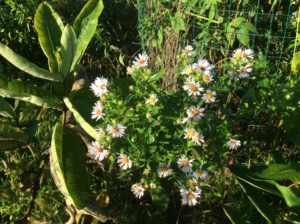
Surrounding my mowed lawn is a wild, mostly uncultivated space that currently has goldenrod blooming with tall asters starting to blossom. Every day when I pass these flowers, I see bumblebees, butterflies and other insects collecting the nectar to eat or store for the winter. Last year, when a section of soil was disturbed during construction of a building, I decided to seed the area with native wildflowers rather than grass. (I am not a fan of mowing the lawn.) Watching the series of flowers bloom over the late spring to autumn has been beautiful, colorful and full of tiny moments of joy. Not only do I see insects enjoying the flowering plants, but birds will land on the taller greenery, sometimes just resting, sometimes collecting seeds. I am not sure who has been startled more often, me or the birds when I walk by, flushing a bird from the thicket of tall plants.
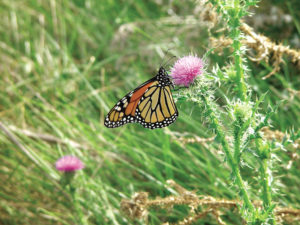
Where some people might see wild, unruly areas, I see Monarch butterflies on their daily flight, fluttering above me and the “weeds”. I have even been lucky enough to find Monarch caterpillars munching on milkweed, a common plant in my wild space. Despite my efforts, I have a lot of tall ragweed appearing in my yard, but have discovered that birds love the seeds, including my chickens, and squirrels will remove and eat the leaves. In addition, I see fireflies in early June through late August, many I find hanging out on the shady greenery during the day before their light display at night.
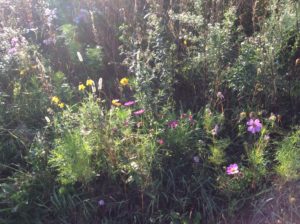
Why should you care about wild spaces? Scientists have been reporting on the decline in pollinators worldwide. Many believe the decrease in and fracturing of available habitat is a big reason that there are fewer bees and other pollinating insects. A recent article highlighted the efforts of the Dutch to deliberately cultivate native plants in and around Amsterdam. A baseline survey of pollinators around the city was done in 2000; a new survey completed in 2015 found 21 new species of bees. Eight ecologists work for the city as part of the efforts to establish a more ecofriendly environment, and the municipal plan to establish more native plants in green spaces likely has helped restore some of the lost bee habitat.
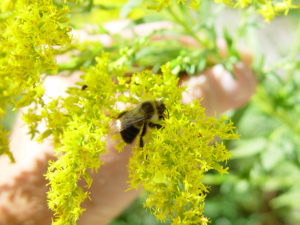
While it is nice to learn that Amsterdam is helping bees, what can a single person do? If you have space in your front, back or side yard, you can add native plants to the area. I have found there are always areas that are harder to mow like along the fence or that odd space by the porch. Consider installing native plants rather than using the weed trimmer. Many natives are perennials, meaning they come back for years so once they are installed, you can sit back and enjoy them year after year. Some of my favorite plants include Prairie Smoke, asters and coneflowers.
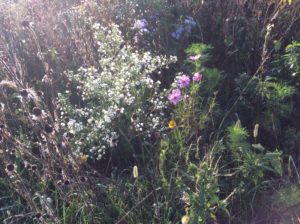
Many people ignore that strip of space between the sidewalk and the street. I find that is a great spot for converting to native plants while eliminating an area to mow. You can start with a few plants in a pot or a tub, or sow seeds in a garden area. By starting small and slowly expanding your bee-friendly habitat, you can learn which plants you like as you fit them into your space. Ideally, having flowers bloom throughout the growing season offers the greatest benefit to insects. The Xerces Society is a great resource for North American residents to learn about pollinator-friendly garden spaces. I suggest using the search terms “native plants” paired with your country or region to find plants and resources specific for your area.
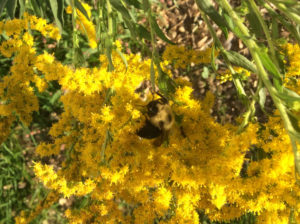
Adding wild bee-friendly space to your yard can be as simple as not mowing an area or as involved as planned landscaping with native plants. Whatever method you choose, the insects will appreciate the undisturbed space and the blooms from which to collect nectar.
Sara Klink
Latest posts by Sara Klink (see all)
- A One-Two Punch to Knock Out HIV - September 28, 2021
- Toxicity Studies in Organoid Models: Developing an Alternative to Animal Testing - June 10, 2021
- Herd Immunity: What the Flock Are You Talking About? - May 10, 2021
